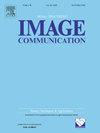Integrated multi-channel approach for speckle noise reduction in SAR imagery using gradient, spatial, and frequency analysis
IF 2.7
3区 工程技术
Q2 ENGINEERING, ELECTRICAL & ELECTRONIC
引用次数: 0
Abstract
Synthetic Aperture Radar (SAR) imagery is inherently marred by speckle noise, which undermines image quality and complicates subsequent analytical endeavors. While numerous strategies have been suggested in existing literature to mitigate this unwanted noise, the challenge of eliminating speckle while conserving subtle structural and textural details inherent in the raw data remains unresolved. In this article, we propose a comprehensive approach combining multi-domain analysis with gradient information processing for SAR. Our method aims to effectively suppress speckle noise while retaining crucial image characteristics. By leveraging multi-domain analysis techniques, we exploit both spatial and frequency domain information to gain a deeper insight into image structures. Additionally, we introduce a novel gradient information processing step that utilizes local gradient attributes to guide the process. Experimental results obtained from synthetic and real SAR imagery illustrate the effectiveness of our approach in terms of speckle noise reduction and preservation of image features. Quantitative assessments demonstrate substantial enhancements in image quality, indicating superior performance compared to current state-of-the-art methods.
基于梯度、空间和频率分析的综合多通道SAR图像散斑降噪方法
合成孔径雷达(SAR)图像本身就受到散斑噪声的影响,这会破坏图像质量,并使后续的分析工作复杂化。虽然现有文献中提出了许多策略来减轻这种不必要的噪声,但在保留原始数据中固有的微妙结构和纹理细节的同时消除斑点的挑战仍然没有解决。在本文中,我们提出了一种将多域分析与梯度信息处理相结合的SAR综合方法,该方法旨在有效地抑制散斑噪声,同时保留关键的图像特征。通过利用多域分析技术,我们利用空间和频域信息来更深入地了解图像结构。此外,我们还引入了一种新的梯度信息处理步骤,利用局部梯度属性来指导处理过程。合成和真实SAR图像的实验结果表明,该方法在降低斑点噪声和保留图像特征方面是有效的。定量评估显示了图像质量的大幅提高,表明与当前最先进的方法相比,性能更优越。
本文章由计算机程序翻译,如有差异,请以英文原文为准。
求助全文
约1分钟内获得全文
求助全文
来源期刊

Signal Processing-Image Communication
工程技术-工程:电子与电气
CiteScore
8.40
自引率
2.90%
发文量
138
审稿时长
5.2 months
期刊介绍:
Signal Processing: Image Communication is an international journal for the development of the theory and practice of image communication. Its primary objectives are the following:
To present a forum for the advancement of theory and practice of image communication.
To stimulate cross-fertilization between areas similar in nature which have traditionally been separated, for example, various aspects of visual communications and information systems.
To contribute to a rapid information exchange between the industrial and academic environments.
The editorial policy and the technical content of the journal are the responsibility of the Editor-in-Chief, the Area Editors and the Advisory Editors. The Journal is self-supporting from subscription income and contains a minimum amount of advertisements. Advertisements are subject to the prior approval of the Editor-in-Chief. The journal welcomes contributions from every country in the world.
Signal Processing: Image Communication publishes articles relating to aspects of the design, implementation and use of image communication systems. The journal features original research work, tutorial and review articles, and accounts of practical developments.
Subjects of interest include image/video coding, 3D video representations and compression, 3D graphics and animation compression, HDTV and 3DTV systems, video adaptation, video over IP, peer-to-peer video networking, interactive visual communication, multi-user video conferencing, wireless video broadcasting and communication, visual surveillance, 2D and 3D image/video quality measures, pre/post processing, video restoration and super-resolution, multi-camera video analysis, motion analysis, content-based image/video indexing and retrieval, face and gesture processing, video synthesis, 2D and 3D image/video acquisition and display technologies, architectures for image/video processing and communication.
 求助内容:
求助内容: 应助结果提醒方式:
应助结果提醒方式:


